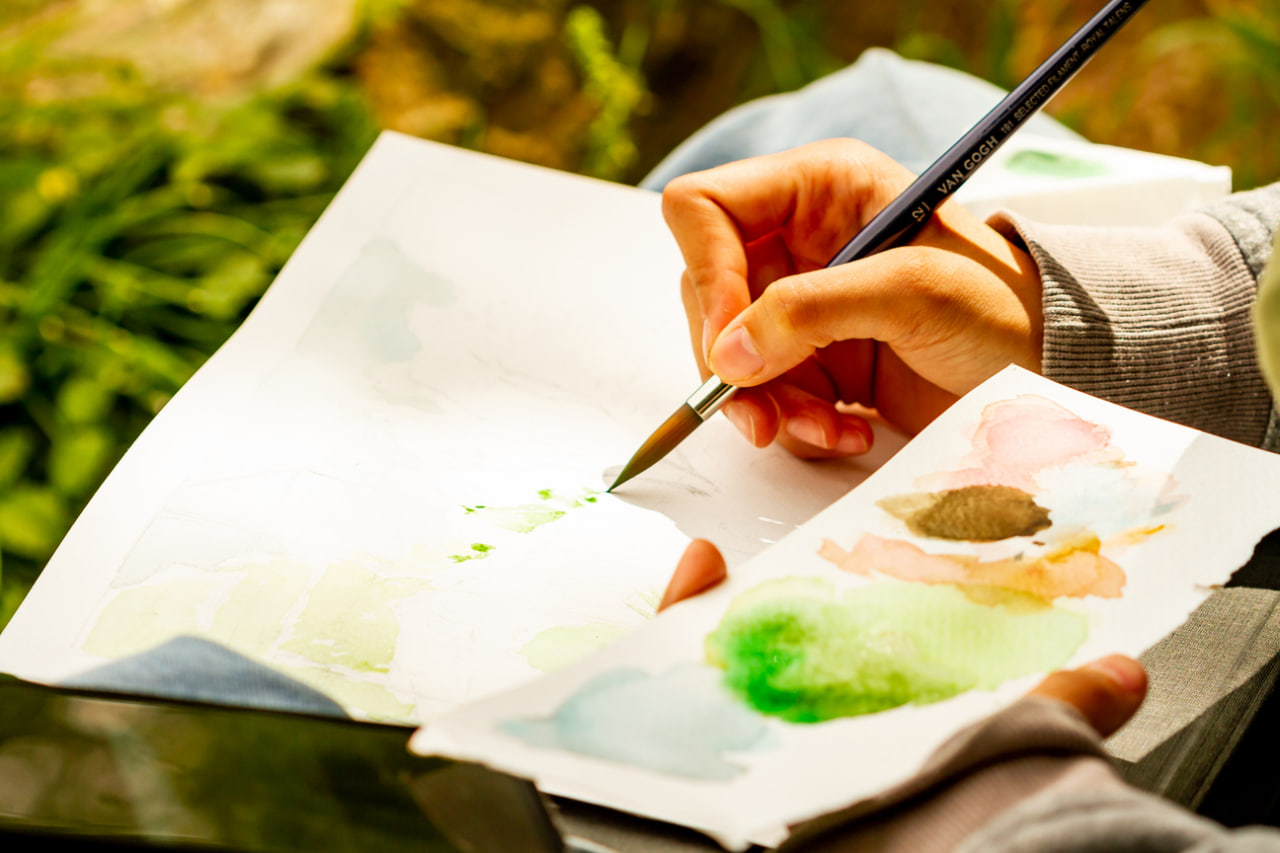Overcoming Common Watercolor Challenges
Watercolor painting is a unique and rewarding art form, but it comes with its own set of challenges that can be frustrating for beginners and even experienced artists. The unpredictable flow of water and pigment, drying times, and color mixing require patience and practice to master. In this blog, we will explore some of the most common watercolor challenges and provide practical tips to help you overcome them, so you can create beautiful, confident paintings.
Managing Water Control
One of the biggest challenges in watercolor is controlling the amount of water on your brush and paper. Too much water can cause colors to bleed uncontrollably, creating unwanted blobs and muddy areas. Too little water may result in streaky, uneven washes.
To manage water control, start by practicing with your brush to understand how much water it holds when fully loaded and how it behaves on your paper. Use blotting techniques on a paper towel to remove excess water before applying paint. Adjust the ratio of water to paint gradually until you achieve the desired transparency and flow.
Using good quality paper designed for watercolor also helps because it can absorb water evenly, reducing pooling and streaks.
Preventing Muddy Colors
Muddy colors often occur when complementary colors or too many pigments mix together, resulting in dull or brownish tones. This is a common problem when layering or blending colors without planning.
To avoid muddy colors, start with a limited palette of pure colors and learn how they mix. Use glazing techniques by applying thin, transparent layers of color and allowing each layer to dry before adding the next. This preserves color vibrancy and prevents unwanted mixing.
When blending on paper, work quickly and with clean water to soften edges rather than mixing harshly. Clean your brush frequently to avoid contaminating colors.
Dealing with Unwanted Blooming and Backruns
Blooming or backruns happen when wet paint spreads unevenly on damp paper, creating lighter “starburst” patterns. While this can be used creatively, it can also disrupt the look of your painting when accidental.
To control blooming, avoid applying paint onto overly wet areas unless intentionally using the wet-on-wet technique. Allow initial washes to dry sufficiently before adding new layers. You can also tilt your paper to direct the flow of paint or use less water to minimize spreading.
Experimenting with timing and water amounts will help you understand how your paints react on your specific paper.
Fixing Mistakes and Lifting Paint
Watercolor is less forgiving than other media, but mistakes can still be fixed with some care. Lifting paint is the technique of removing or lightening color after it has been applied.
To lift paint, use a clean, damp brush or a sponge and gently blot the area while the paint is still wet. For dried paint, re-wet the area lightly and then blot. Be patient and gentle to avoid damaging the paper.
Masking fluid or tape can also be used to protect areas you want to keep white or free from paint, helping prevent errors during painting.
Achieving Smooth Washes
Creating smooth, even washes can be tricky for beginners. Uneven washes often appear blotchy or streaky due to uneven water distribution or drying too quickly.
To achieve smooth washes, load your brush with enough water and pigment and work quickly across the paper. Start from one edge and maintain a wet border as you move to the other side to avoid hard edges. Practice large, sweeping strokes and avoid going back over drying areas.
Using a flat or mop brush can help cover larger areas evenly.
Maintaining Color Vibrancy
Watercolors naturally dry lighter than when wet, which can make it challenging to predict final colors. Overworking the paint or layering too many colors can dull the vibrancy.
To maintain bright colors, use high-quality paints with strong pigmentation and apply colors in thin layers. Avoid excessive blending on the paper, and use glazing techniques for depth rather than thick paint application.
Planning your color scheme in advance and testing colors on scrap paper can help achieve the desired results.
Patience with Drying Times
Watercolor requires patience, especially when layering colors. Painting over a wet area can cause colors to bleed and mix unintentionally.
Allow each layer to dry completely before adding new paint on top, especially when working with different colors or details. Use a hairdryer on a low setting if you need to speed up drying, but avoid overheating the paper.
Patience will result in cleaner, sharper, and more controlled paintings.
Embracing Imperfections and Experimentation
While mastering control is important, it’s equally valuable to embrace the fluid and unpredictable nature of watercolor. Some “mistakes” can lead to unexpected and beautiful effects.
Experiment with different techniques, papers, and brushes to discover your style. Learn to work with the flow rather than against it, and remember that every artist develops their unique approach through trial and error.

